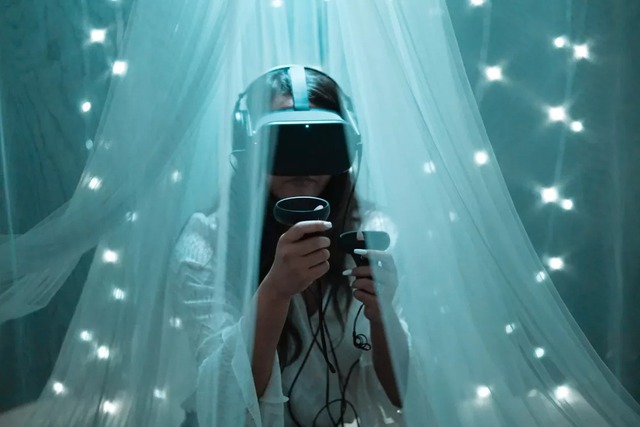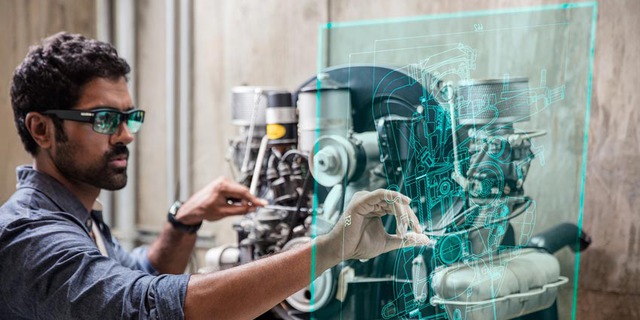AR and VR technology: Everyone hears it everywhere, but not everyone is getting it right
- Tram Ho
Everyone loves to talk about Virtual Reality (VR) and Augmented Reality (AR) as some form of pioneering technology that will “disrupt” or even “revolutionize” the tech landscape. Marketing teams call AR/VR “the future,” in mystical ways, with a lot of anticipation. And they’re almost always linked together as AR/VR, like they’re the same story.
In fact, this has become a common mistake. After reading this article, if you still see a presentation that lumps the two together in some future use-case, you should automatically lower your expectations for the rest of your promotional program. or resell it.
In fact, AR and VR are very different. And their futures are not tied together. This is important because to be commercially attractive they need to answer a number of important questions. And those questions will be similar, but the answers will be very different.

VR and AR may be similar in terms of product design that support…
Technically, the electronics that support these two technologies can be very similar. VR is a high-end headset that requires a very advanced, high-resolution display. AR will likely be a similar set of glasses, also requiring a high-density display, with components miniaturized by advanced technology. But that is engineering-based thinking. No offense to the engineers here, but what many believe this is going to be disruptive technology needs to be analyzed from the perspective of the user’s mind. And here, AR and VR are completely unrelated.
VR offers a fully immersive experience, and the VR headset blocks all external light sources. This means that the user cannot (or should not) move, because they run the risk of hitting a wall or table. VR is made for content consumption, things like videos, games, online meetings, distance learning. Of course, users can get an omnidirectional treadmill, but they’ll still have to stay in a room. VR doesn’t have to be mobile, which greatly simplifies things like power and network requirements. VR, for example, doesn’t need 5G, a home Wi-Fi network or even fiber would allow it to work just fine.
In contrast, AR is meant to be mobile. The whole problem of Arab is the classification of data in the real world. This makes the electronics that support it much more challenging. Power would be an issue, imagine always having to wear a large battery on your belt that has a wired connection to the AR glasses. And here, 5G becomes especially meaningful because this technology will require very low data latency, because that will help reduce image blur and avoid users getting dizzy or nauseous.
So the electronics that support these two technologies may be similar, but even at this technical level there are significant differences.

…but AR will be a challenge in managing and integrating data from many different platforms.
And then there will be an important difference in content. VR data can and will be provided by a single source, like video or game makers. In contrast, AR will require integration of big data layers. For example, when you want to use the AR glasses to find a nearby restaurant, you’ll need it to integrate local food guides, maps, and the user’s current location. Today, this information exists online, but moving to something as personalized as AR will likely force a reorganization of those existing data relationships. Because this data belongs to many different sources, and taking it all together will involve privacy issues. No one wants a system that can be called a “data lord” that knows more about what we’re doing, where we stand, and who we’re connected to.
Most importantly, the impact these devices have on user behavior will be completely different. VR may change the way we consume content and will require new ways to capture it, but will not change the way we interact as humans. In contrast, AR has the potential to make human interactions like smartphones, that is to say, to a huge extent. If done well, AR means instant connectivity to all sorts of data – a friend you don’t realize is on the other side of the park, a restaurant you don’t remember. is very close, some events are happening just a block away. We can’t really predict these things, just like no one could have predicted the existence of Uber or Grab before the iPhone came out.
And when it comes to the basics of user interface and user experience, AR and VR are not the same thing at all. To summarize this, we may have to look at all the devices and machines that we regularly use and compare them in two ways – how portable the device is and how personal it is. to us.
Trains and taxis are not private vehicles, shared by many people, but they are mobile vehicles. Smartphones are very personal, and you only share your passwords with people who are very close to you. The laptop sits somewhere in the middle, somewhat portable and quite personal to the owner, but still easier to share. Virtual reality (VR) glasses will be at the bottom, slightly personal and not all mobile devices. In contrast, AR glasses will likely be extremely personal, but not quite as portable as our phones.

The trade-off between portability and personalization.
Think about the variety of user interface models for these devices, and we’ll start to dive into how AR and VR differ.
At this point, the real question at the heart of VR and AR, the only question that really matters is who controls the software, the operating system (OS) that powers them. From this point of view, the answer to VR could be very simple – they will be tied to consoles and computers.
On the other hand, the answer to AR is still a lot of things that are not clear. Apple, Google, and Meta are all eager to become their operating system suppliers, but this is not necessarily the final answer. Solving many user interface and operating system problems for AR will be a big challenge and the field still has plenty of room for the big boys to compete.
Check out Techspot
Source : Genk
